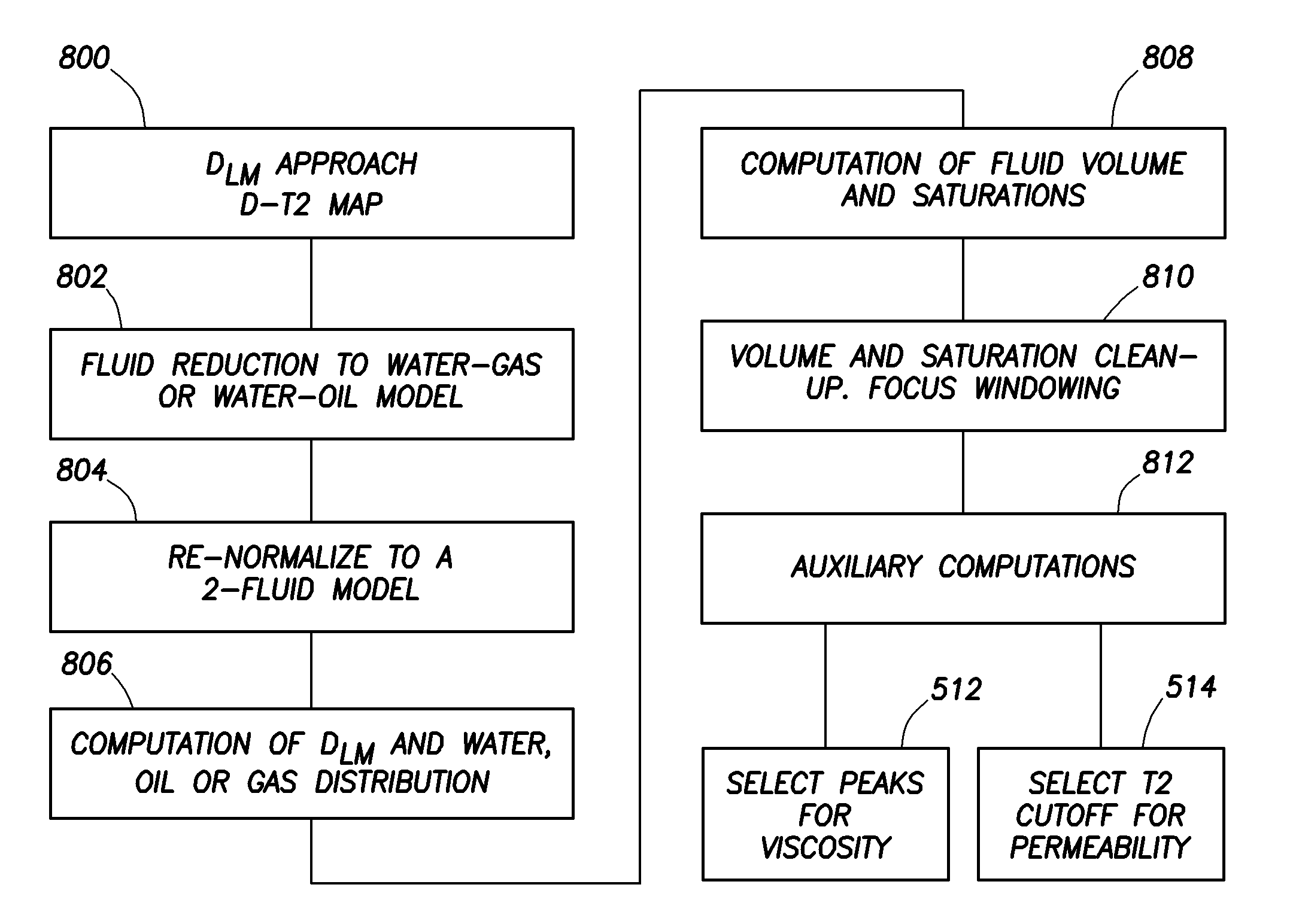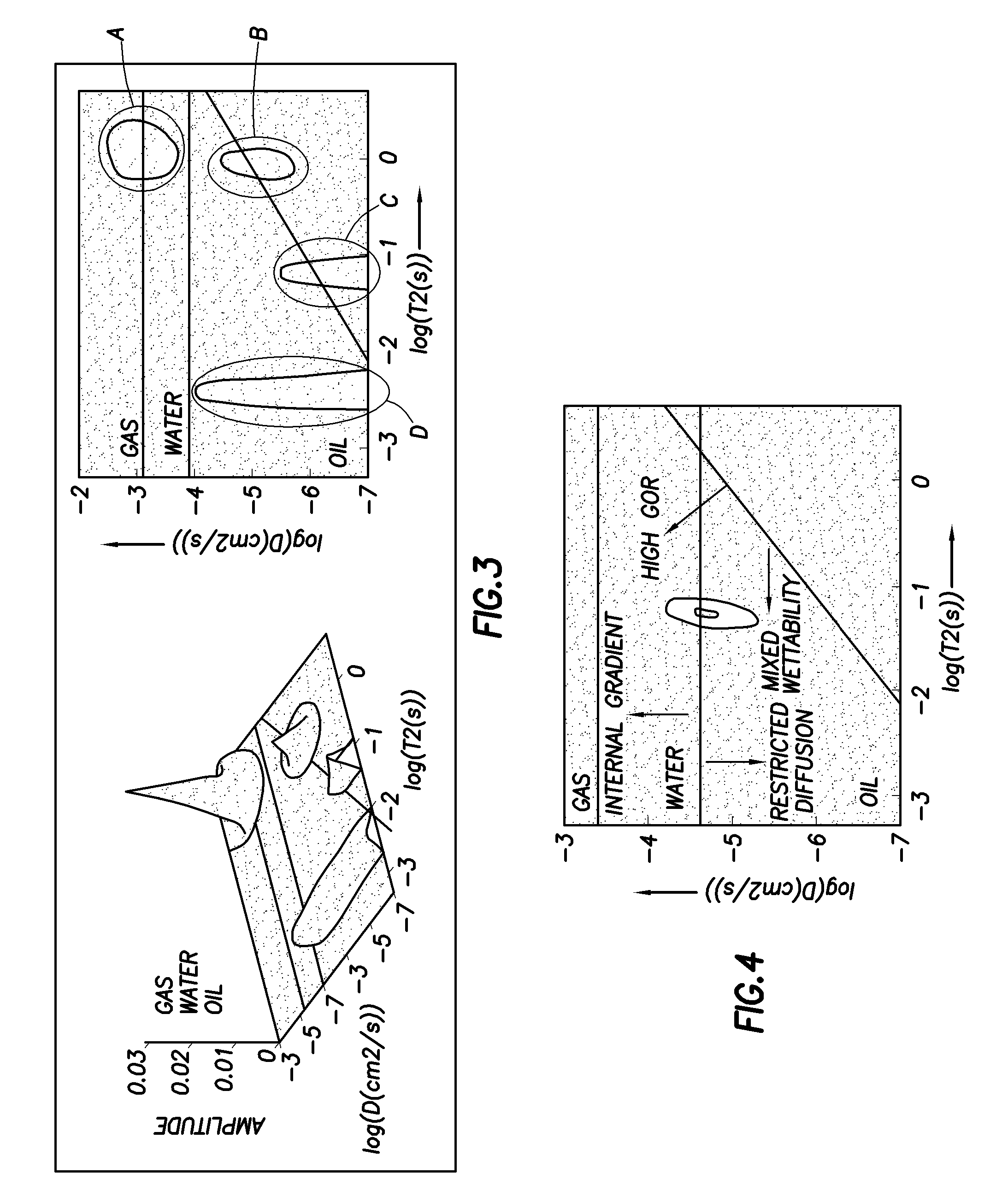Methods for formation evaluation based on multi-dimensional representation of nuclear magnetic resonance data
a nuclear magnetic resonance and multi-dimensional data technology, applied in the direction of reradiation, measurement using nmr, instruments, etc., can solve the problems of not always easy to distinguish which signals are from water, assumption is not always valid, assumption fails
- Summary
- Abstract
- Description
- Claims
- Application Information
AI Technical Summary
Problems solved by technology
Method used
Image
Examples
Embodiment Construction
[0035]The disclosed subject matter describes quantitative methods to interpret two-dimensional nuclear magnetic resonance (NMR) maps derived from common NMR formation evaluation measurements. Although other values may be used, a preferred embodiment is primarily discussed herein based on diffusion vs. T2 (D-T2) maps. According to the present invention, D-T2 maps can be used to help in the selection of parameters for application to existing model-based inversion codes. Further, complete petrophysical answers (porosity, permeability, fluids volumes, saturations, oil viscosity etc.) can be derived directly from the D-T2 maps. To take advantage of the visual appeal of the maps, the proposed methods are interactive and, according to an embodiment, consist of sequential point-and-click procedures.
[0036]Acquisition of NMR measurements according to embodiments of the invention may be accomplished with various methods of NMR measurements known in the art. For example, the measurements may be...
PUM
 Login to View More
Login to View More Abstract
Description
Claims
Application Information
 Login to View More
Login to View More - R&D
- Intellectual Property
- Life Sciences
- Materials
- Tech Scout
- Unparalleled Data Quality
- Higher Quality Content
- 60% Fewer Hallucinations
Browse by: Latest US Patents, China's latest patents, Technical Efficacy Thesaurus, Application Domain, Technology Topic, Popular Technical Reports.
© 2025 PatSnap. All rights reserved.Legal|Privacy policy|Modern Slavery Act Transparency Statement|Sitemap|About US| Contact US: help@patsnap.com



